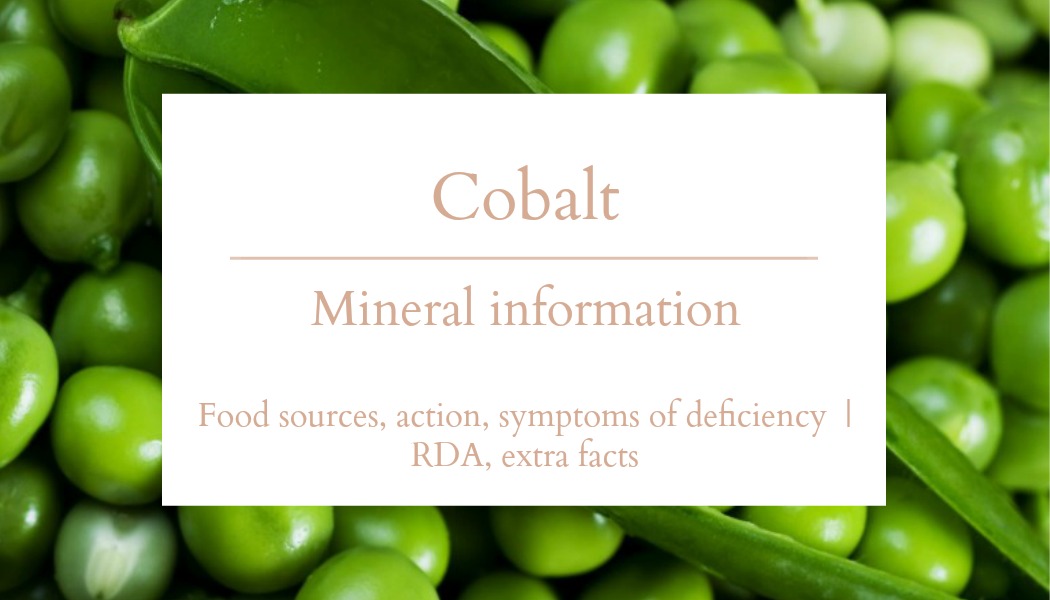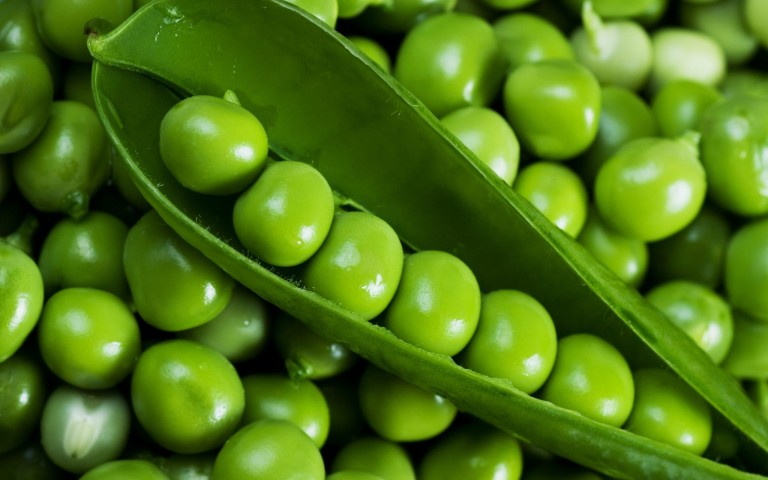COBALT

FOOD SOURCE
Lettuce, cabbage, peas, tomatoes, lean meat, organ meat such as liver.

ACTION
Required for blood formation.
It is a component of vitamin B12, which makes red blood cells and maintains the nervous system and helps prevent iron deficiency.
SYMPTOMS OF DEFICIENCY
Pernicious anemia is one of the obvious symptoms of a cobalt deficiency. It includes numbness, tingling in the extremities and decreased nerve function.
A deficiency condition involving solely the trace mineral cobalt usually does not occur in human beings. As the maximum bodily concentration of the element is as an integral part of vitamin B12 or cobalamin, insufficient intake of cobalt in diet presents illnesses similar to vitamin B12 deficiency disorders, namely pernicious anaemia and macrocytic anemia.
Pernicious anemia, also called Addison’s anemia, is characterised by a steep reduction in the number of red blood cells owing to a decline in capability to assimilate vitamin B12, which contains cobalt ions. When the red blood cells become enlarged to an unusually large size, due to insufficient vitamin B12 reserves in the body, then the ailment is termed as macrocytic anemia. Netmeds
RDA*
Recommended Dietary Allowance for cobalt has not been established.
* Recommended Daily Allowance of Mineral
This may be because very small amounts are needed for humans to stay healthy.
The organic form of cobalt is present in the green parts of plants such as cabbage, lettuce, spinach, turnips, and kale, fish, cereals, dried fruits like figs, raisins, apricots, prunes, dates and also water.
Original Crispy Cabbage Salad
Ingredients:
- 1 packet Chang’s Original Fried Noodles*
- ½ Chinese cabbage (wombok), shredded finely
- 6 green onions, sliced
- ½ cup slivered almonds, toasted
- 1/2 cup Chang’s Crispy Noodle Salad Dressing
*alternatively you can use Chang's Gluten Free Fried Noodles



